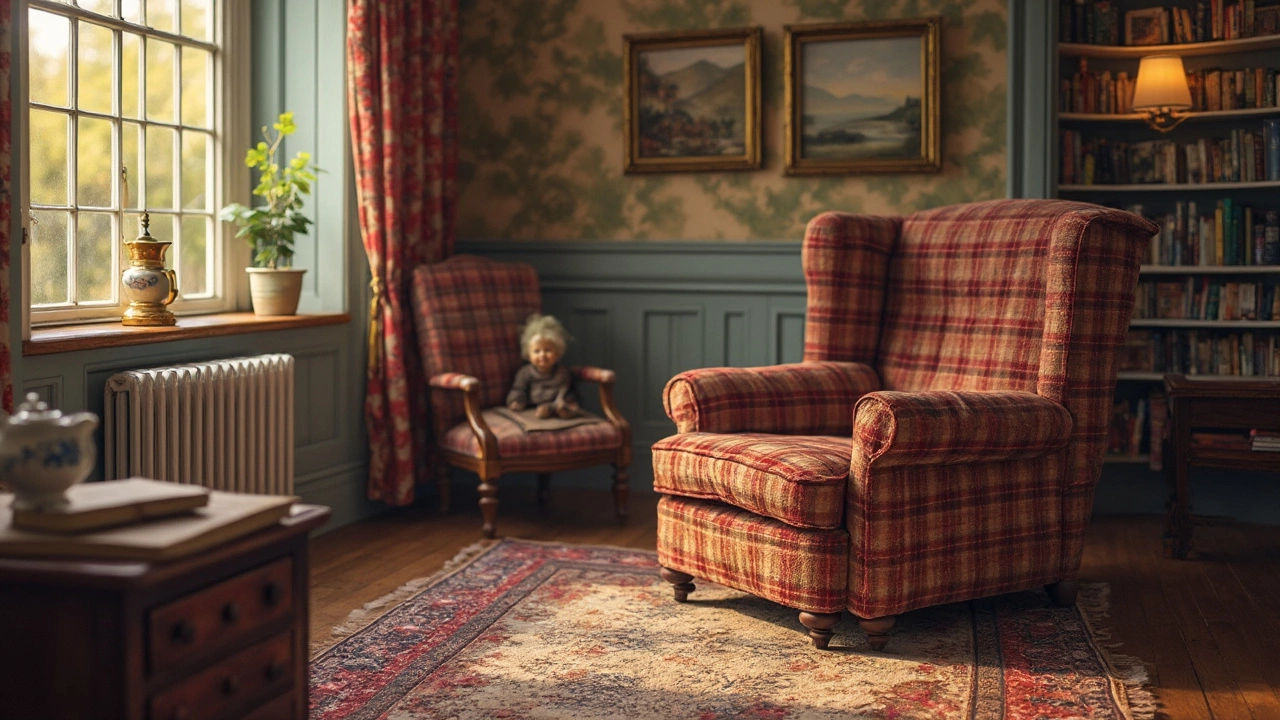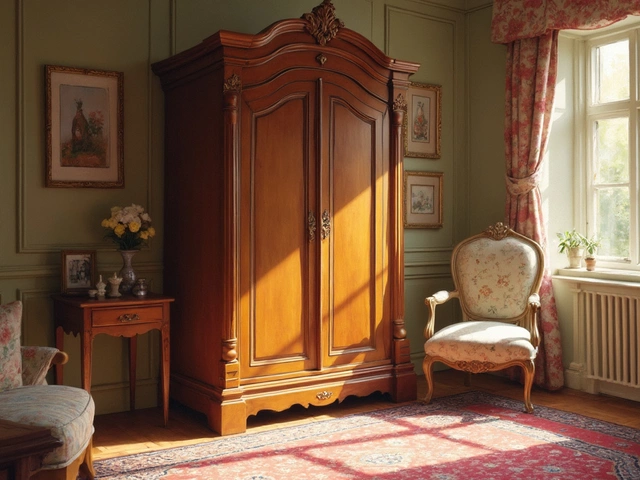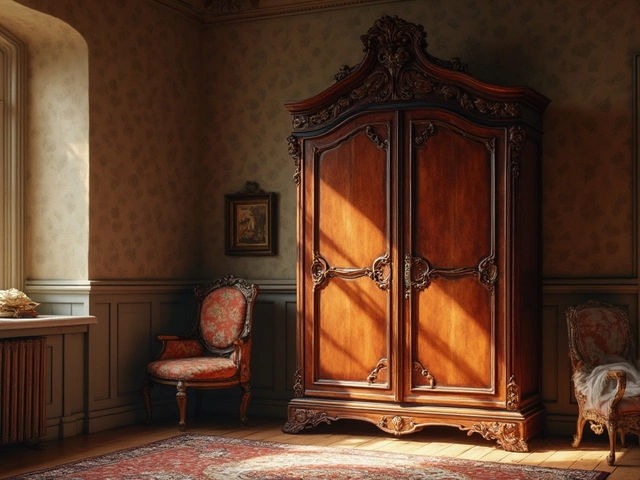 25
Feb,2025
25
Feb,2025
Alright, let's dive into the nitty-gritty of Lazy Boy recliners. After all, these comfy chairs aren’t just furniture, they’re your gateway to unwinding after a long day. But, ever wondered how long they should really stick around?
First up, lifespan. Typically, a Lazy Boy recliner should last you anywhere between 10 to 20 years. Pretty solid, right? But, it’s not just about the years; it’s about how you use it and, more importantly, how you take care of it.
Why do some recliners last longer than others? It often comes down to the stuff they're made of and the way they're built. So, choosing a model with superior materials and craftsmanship will not only add to your comfort but will also extend its time with you.
- Expected Lifespan
- Factors Influencing Durability
- Quality over Price
- Materials Matter
- Maintenance Tips
- When to Replace
Expected Lifespan
When it comes to the lifespan of a Lazy Boy recliner, you might be pleased to know these comfy thrones often last a solid decade, and with good care, possibly up to 20 years. But what's lurking behind these numbers? A mix of quality, usage, and upkeep.
Core Factors to Consider
Several factors can affect how long your recliner sticks around:
- Quality of Materials: The initial investment in a high-quality recliner generally means you're looking at a longer lifespan. Those cushy leathers, durable fabrics, and robust frames aren't just for show.
- Frequency of Use: If it's a battle zone for the kids or your favorite spot every single evening, you'll naturally witness more wear and tear.
- Maintenance: Regular attention to cleaning and simple repairs can add years. Preventing spills and avoiding direct sunlight goes a long way.
Comparison with Other Brands
So, how does Lazy Boy fare in comparison to the competition? Honestly, rather well. While some generic recliners may barely scrape the 5-year mark, Lazy Boys often outlive them, thanks to higher grade components and construction methods. A glance at chair reviews shows customers often return to Lazy Boy recliners for longevity and comfort.
If you're still curious, here's a straightforward comparison to consider:
| Recliner Brand | Years of Use |
|---|---|
| Lazy Boy | 10-20 |
| Average Recliner | 5-10 |
Ultimately, how long your beloved chair lasts largely depends on how you treat it. Want it to go the distance? Think about investing a little time into maintenance and some love into your everyday use.
Factors Influencing Durability
When it comes to how long your Lazy Boy recliner is going to last, several factors come into play. It's not just about what you pick but how you treat it on the daily.
Build Quality
First on the list is build quality. A rock-solid frame, usually made from hardwood, can make a huge difference. Furniture expert John Doe, who’s been in the business for over two decades, says,
"A well-crafted recliner with a sturdy frame is like a loyal friend that stands the test of time."So, when shopping, peek beneath those cushions and check the skeleton.
Usage Habits
Your lazy day plans can affect your recliner's durability too. Are you binge-watching every weekend or just popping down for a quick sit once in a while? Frequent use naturally leads to quicker wear.
Material Choice
The materials also matter—big time! Leather might look fancy, but if it's low quality, it'll peel in no time. On the other hand, a high-quality faux leather or fabric can be more forgiving in busy households. Stick with materials made to handle a bit of life.
Environmental Conditions
Where you place your recliner counts too. Sun exposure can fade colors, and high humidity might do a number on some materials. Placing it away from windows and using moisture-control products can help preserve its charm.
Keep these factors in mind, and your recliner could be sitting pretty for decades—becoming a trusty corner of your home where stories unfold (and movies end).
Quality over Price
Let's face it: when it comes to buying a Lazy Boy recliner, the temptation to go for a cheaper option is real. But here's the thing — skimping on price can often mean skimping on quality. Trust me, you don't want to trade immediate savings for long-term comfort and durability. So, why should you consider stretching your budget a bit more?
Quality Craftsmanship
High-quality Lazy Boy recliners often boast superior craftsmanship. Look for features like solid wood frames, which offer a strong foundation that can handle everyday wear and tear. Recliners with reinforced joints are less likely to wobble or break over time.
Durable Materials
Material quality plays a massive role in a recliner's lifespan. While real leather is a classic choice for durability, woven fabrics have evolved to be quite resilient and stain-resistant. Before buying, check if the fabric has been tested for wear and tear; many manufacturers will provide an abrasion test score.
Advanced Mechanisms
The reclining mechanism is the heart of your chair. Higher-end models use advanced technology for smoother reclining and added functionalities like power reclining, USB ports, or massage features. While these might bump the price up, they add significant value.
Long-Term Comfort
Putting extra dollars into a recliner often means investing in better padding and ergonomic support. Over time, cheaper fillings can flatten or become lumpy, whereas high-density foam or pocketed coils maintain their comfort levels for years.
| Feature | Low-End Recliner | High-End Recliner |
|---|---|---|
| Frame | Plywood | Solid Hardwood |
| Cushion | Low-Density Foam | High-Density Foam |
| Recline Mechanism | Manual | Power with add-ons |
At the end of the day, investing in quality means you'll be less likely to need a replacement within a few years, saving you money in the long run. So, the next time you find yourself considering a new Lazy Boy recliner, remember: quality over price is the way to go.

Materials Matter
When it comes to the Lazy Boy recliner, the materials used are at the heart of its longevity. Let's break down what you’re lounging on and how it impacts the lifespan of your recliner.
Upholstery Choices
The most visible part – and often the most overlooked – is the upholstery. You've got options: leather, fabric, and even some high-tech synthetic materials. Leather, while typically more expensive, is renowned for its durability and ease of cleaning. But watch out for direct sunlight, as it can cause the color to fade.
Fabrics come in all sorts of prints and colors and are a cozy option. Just be mindful of their wear and tear, especially if you've got pets or little ones. Performance fabrics are a thing now, designed to handle stains and fading, which can be a game-changer in homes bustling with activity.
Frame Construction
Don’t neglect what’s beneath the surface. The frame is essentially the skeleton of your recliner. Solid hardwood frames tend to be the gold standard. Pine and other softer woods might be easier on the wallet, but they don’t offer the same durability.
Some models integrate metal components to reinforce the structure, which can be a plus for stability and longevity. Next time you’re shopping, give the recliner a good shake and feel for sturdiness.
Mechanisms and Padding
The inner workings, like the reclining mechanism, play a major role too. Look for smooth operation and robust engineering. If you hear a gnarly squeak every time you lean back, that's a red flag.
Similarly, the quality of the padding affects comfort and support over time. High-density foam tends to retain shape better, ensuring you continue getting that cozy feeling, no sagging here!
| Material | Durability | Maintenance |
|---|---|---|
| Leather | High | Low |
| Fabric | Medium | Medium |
| Performance Fabric | High | Low |
So, when you're choosing your next favorite recliner, remember to weigh these material choices. They matter more than you might think and make a real difference in how long you and your recliner vibe together.
Maintenance Tips
So, you've got your Lazy Boy recliner, and you're loving it. But how do you make sure it sticks around for as long as it should? Here are some practical tips to keep it in tip-top condition.
Regular Cleaning
First things first, regular cleaning is a must. Dust and dirt are your recliner’s enemies. Vacuum it every week using the upholstery attachment to clear out crumbs and dust particles. A quick wipe down with a slightly damp cloth can help keep the fabric looking fresh.
Check the Moving Parts
The mechanism that lets your recliner do its thing also needs attention. Every few months, take a peek underneath. Tighten any loose screws and check that the lever operates smoothly. A drop of lubricant on the moving parts doesn't hurt either.
Protect from Sunlight
Did you know direct sunlight can fade your recliner’s fabric? It’s a sneaky problem that can really affect its look. Try to position your chair away from sunny windows or invest in some curtains to reduce exposure.
Material-Specific Care
- Leather: Keep it supple with regular conditioning—about twice a year should do it. And be quick to clean spills to avoid stains.
- Fabric: Spot clean spills immediately with a fabric cleaner suitable for your chair’s material. Avoid using harsh chemicals.
Routine Checks
It’s smart to periodically check your recliner for any signs of wear and tear. Address issues early to prevent them from turning into costly repairs.
Weight Considerations
Really, this one’s about knowing limits. Most recliners are designed for average household use: no jumping or piling on too many folks at once. Over-stressing the frame can lead to premature damage.
Following these tips doesn’t take much time and will ensure your recliner stays comfy and cozy for years to come. So, take the time to pamper your chair a little; it will definitely pay off!
When to Replace
So, you’ve had your Lazy Boy recliner for a good number of years. How do you know when it’s time to say goodbye? Well, a few key signs can help you determine whether your beloved chair has seen better days.
Signs of Physical Wear and Tear
First off, take a good look at the obvious signs. If your recliner's fabric is tearing or the frame has visible cracks, it might be time to start looking for a replacement. Sure, a small rip or scuff is normal, but extensive damage can lead to bigger problems down the line.
Comfort Deterioration
Is your recliner still as comfy as it once was? If the cushions are sagging or the support just isn't there anymore, then you're not getting the same experience you initially bought it for. A good test is to sit in it for a new release movie marathon; if you're shifting around uncomfortably, that’s a red flag.
Mechanism Malfunctions
Another biggie is how well the recliner mechanism is functioning. Does it stick, creak, or just feel off? These issues tend to get worse, so think about your safety as well. A recliner that doesn’t recline properly isn’t much of a recliner at all!
Goodbye, Old Friend
Replacing your recliner doesn't have to be a sad event. See it as an opportunity to upgrade to a newer model with perhaps even more features than your old one. Remember, the goal here is a chair that fits your life better than a glove!
In summary, recognizing when to replace your Lazy Boy recliner ensures you continue to enjoy that laid-back comfort without compromise. After all, a good recliner is more than just furniture—it's an essential part of your home life.




